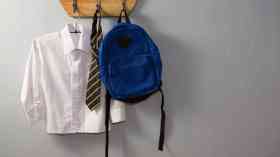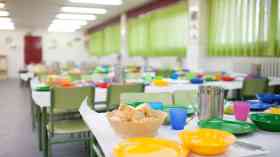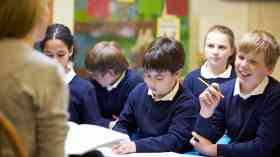
Computing and SEN: the challenges and opportunities
John Galloway, a SEN ICT adviser in Tower Hamlets, discusses how teachers can assist SEND students in developing computational thinking, and encourage their learning beyond the lesson.
The principle of entitlement enshrined in the national curriculum holds good for all pupils, regardless of their abilities, even those with more challenging and complex special educational needs and disabilities (SEND). Making that entitlement a reality brings challenges for classroom teachers.
The computing curriculum, for instance, has three strands, one of which is computer science, within which is the discipline of ‘computational thinking.’ This requires learners to understand a number of concepts, including decomposition – the ability to break a problem down into component parts – and abstraction – removing any unnecessary details. Alongside this is the need to use logic, and to develop algorithms, that is, creating a series of steps to reach a desired result. To do this effectively they will need to debug any glitches that occur, and demonstrate the perseverance required to see it through to the end. For many teachers these are new concepts to teach, let alone make them intelligible to learners with complex learning difficulties.
The other main threads of the computing curriculum – digital literacy and information technology – are less of a concern, because they involve knowledge and activities we are all generally familiar with. They are about using technological tools to complete tasks digitally, for instance, being creative and publishing the results, whether that is a composition, a video or an image. Or finding out information and displaying it in a way that makes it comprehensible to a particular group. Such things can be as straightforward as researching a role model online and creating a poster or presentation. It could also mean making a greetings card, writing a letter, measuring and plotting temperatures, or recording an animation. All fairly commonplace in British classrooms. But programming a robot, whether a real one that rolls across the floor, or a virtual one on a screen, brings a different set of challenges.
Old challenges, new strengths
However, these are not new. Despite the brouhaha the difference between the computing curriculum and its predecessor, ICT, is more about emphasis than content. Programming and coding were a requirement, but now re-framed as writing algorithms and debugging programs. The shift is more than cosmetic, but the challenge is not new.
The difficulties faced by the children and young people learning the subject are not new, either. Whilst the increase in the number of learners in our classrooms deemed to have autistic spectrum orders, dyslexia, cerebral palsy, or myriad other conditions is real, the challenge of creating lessons that are meaningful, rich and rewarding for all of them remains the same.
Seen from another perspective, however, what may seem like barriers to learning can be opportunities to discover new strengths. Those with autistic spectrum conditions (ASC), for instance, may have characteristics that lend themselves to programming, such as thinking in a clear, logical, order and to have resilience and tenacity whilst carrying out repetitive activities. Whilst those with dyslexia are thought to be good at lateral thinking, a useful ability when confronted by a problem in coding and there appears to be no straightforward route to progress.
Learners with speech, language and communication difficulties can benefit from the need to be precise in the choice of language, to sequence it in the right order, and to use correct syntax, whilst those with physical disabilities can control a device and make it behave in a precise, predictable way that may be a real challenge when it comes to their own bodies.
Abstract teaching
Across the board, meeting the demands of the computing curriculum can support learners with diverse special needs. It can also be a lot of fun. When teaching the computer science strand there is a need to move from the concrete to the abstract, from making connections with what learners already know and understand, to what is new knowledge, and from actual robots and devices to virtual ones on the screen, and then onto to myriad other programming challenges. Then there comes the challenge of different approaches to coding and the language employed.
For some learners, those with the greatest learning difficulties, the first step, and one which a few may not move beyond, is understanding cause and effect – that when a switch is clicked it brings about a response that is predictable and consistent. This can allow the child or young person to take control of an element of their immediate environment. This may be turning on and off a toy or fan, playing a piece of music, or cycling through the colours of an LED light.
Others may need to start by developing an understanding of giving and receiving instructions, and of what a sequence is. For instance, they could talk about the steps in a known routine, such as getting ready for school, making a sandwich or crossing the road. More able learners could add decision loops about what might go in the sandwich, or whether there is a Pelican Crossing handy and what its cycle is.
Drawing a simple two by two grid in the playground to navigate whilst giving and receiving directions can help pupils appreciate the need for precision and getting things in the right order so that they successfully move from one place to another. It is helpful from the beginning to insist on accuracy in the language used as this is a key discipline in coding, to reinforce this they could take turns to navigate a ‘robot’ teacher around the room, with only correct commands being followed. Parents can be asked to try similar activities outside of school, along with talking about routines, and reinforcing directional language.
Floor robots
A common starting point in the classroom is to use a floor robot which responds to simple commands. This might be preceded by using a remote control car to get across the difference between steering a device and programming it, that one is predictable and consistent and the other can seem less so.
Most floor robots also have on-screen resources associated with them. This could be a means of programming the device remotely, through a cable or blue tooth connection, or a virtual emulator. These help bridge the step from working with the actual device to working with a representation of it. Beyond that there are a number of options for teaching coding. When using a structured course of small steps from a specific provider, learners can work at their own pace, with the faster moving ones having open-ended activities to extend their learning whilst others progress through the stages.
There are also plenty of options for progressing on to programming with freely available software such as Logo or Scratch, both from MIT. These offer different approaches to coding, one text based on the other using drag and drop segments, and each with their own challenges advantages. The latter can allow learners to quickly create complex activities on-screen. And both can be downloaded for home use.
A number of websites have also become available, such as code.org, that teach computing at a variety of levels with different approaches using a range of familiar games, such as Angry Birds, Frozen, or Minecraft. Again, ideal for individual study outside of school. It is at this stage that children and young people will be working towards the expected outcomes of the national curriculum.
Disparity in recording achievement
But for a small, but significant, number of them – perhaps 2.5 per cent of the school population – they might never get to this point. These are pupils whose achievement is recorded using the P Scales. Despite the revision of the national curriculum, and the move to ‘life after levels,’ these are still in use for learners with more complex and challenging SEND, and they have not been updated, so there is a disparity between the curriculum content and the means to record achievement.
A group of teachers and other professionals have recently created a more appropriate version of the P Scales for the computing curriculum which can be found here: casinclude.org.uk/resources/revised-p-scales-for-computing.
Whatever level children and young people are working at valuable learning can be found in the Computing curriculum. It can also be a lot of fun, and offer them opportunities to achieve in ways that are not easily available in the rest of the curriculum.
The challenges of teaching and assessing the computer science element of the computing curriculum are being explored at ‘Difficult to Teach? SEND and Computing’ on Friday 1 July at the Tower Hamlets PDC in Bethnal Green.
John Galloway is an expert in the use of technology to support teaching, learning and communication for children and young people with SEND. He is also a successful author. His latest book, Learning with Mobile and Handheld Technologies, co‑authored with Merlin John and Maureen MacTaggart, won the Book of the Year in the Innovation and Technology Awards, 2016.
To get in touch with John email
johngalloway@hotmail.com or tweet @Johngalloway
Further Information
ictandinclusion.edublogs.org/send-and-computing-conference
Latest News
24/10/2025 - 10:29
The government has updated its guidance on school uniforms, calling for schools to start limiting branded uniform and PE Kit items ahead of the Children’s Wellbeing & Schools Bill.
24/10/2025 - 10:17
The government has secured partnerships with household brands Morrisons, Sainsbury’s and Weetabix, as well as Magic Breakfast, which will see early adopter schools of the free breakfast scheme benefit from discounts and free deliveries.
23/10/2025 - 10:10
Sync has partnered with AI in Education, founded by educators from Bourne Education Trust, to bring dedicated AI training to schools and colleges across the UK.
23/10/2025 - 09:56
The number of EHCP needs assessments conducted by local authorities has increased by 250 per cent between 2013 and 2024, research by the IPPR reveals.
22/10/2025 - 14:06
The Mayor of London Sadiq Khan has launched a new £2.7 million programme to deliver indoor air quality filters to hundreds of schools across the capital.







